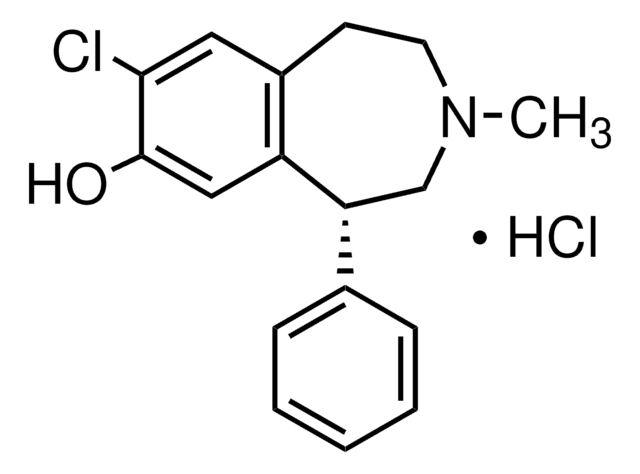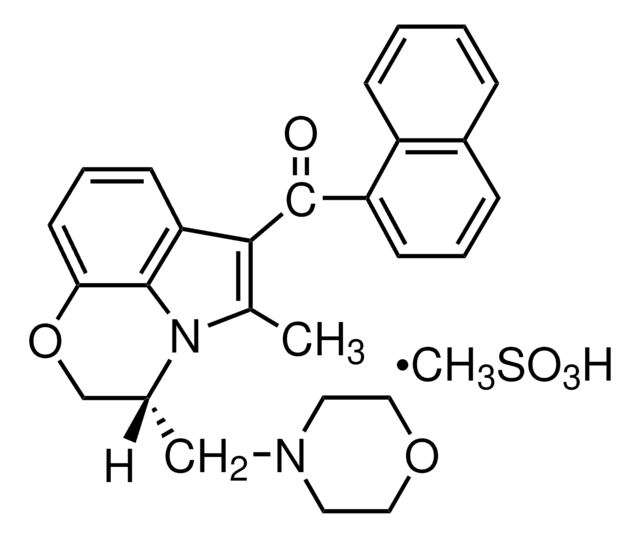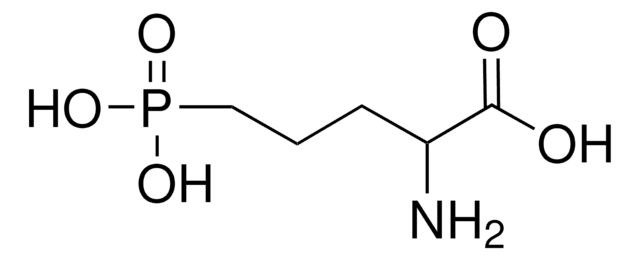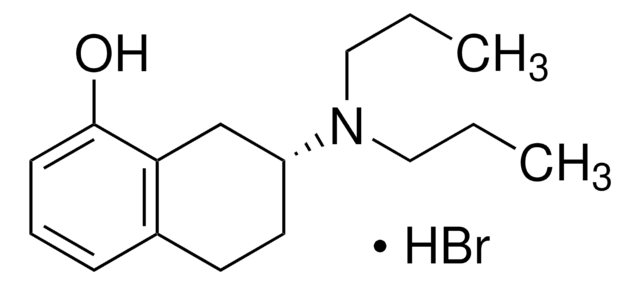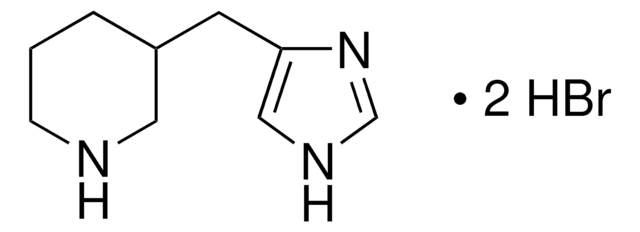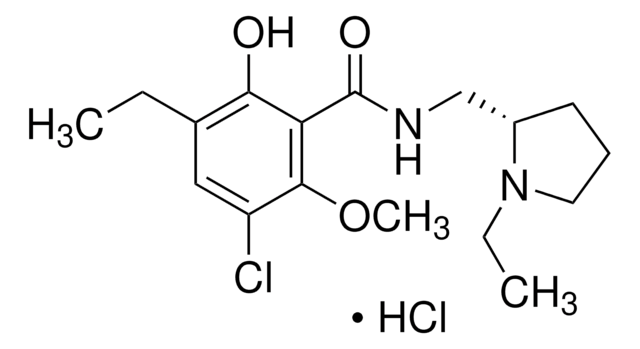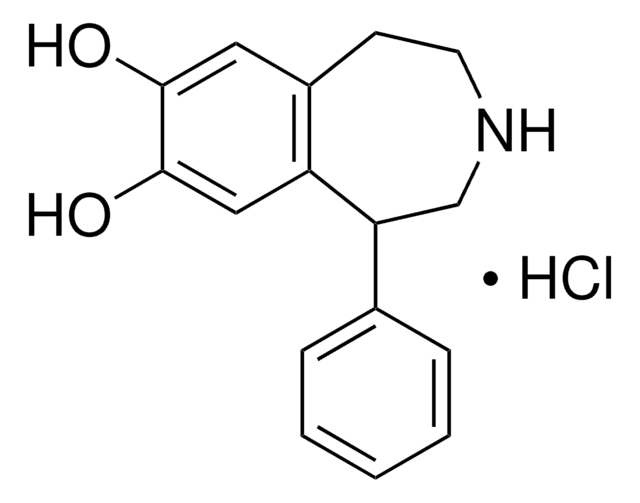C130
Chloro-APB hydrobromide
solid
Sinónimos:
(±)-6-Chloro-7,8-dihydroxy-3-allyl-1-phenyl-2,3,4,5-tetrahydro-1H-3-benzazepine hydrobromide, (±)-SKF-82958 hydrobromide, 6-Chloro-N-allyl-SKF-38393 hydrobromide
About This Item
Productos recomendados
form
solid
Quality Level
color
tan
solubility
H2O: 3.7 mg/mL
aqueous base: unstable
ethanol: soluble
storage temp.
2-8°C
SMILES string
Br.Oc1cc2C(CN(CCc2c(Cl)c1O)CC=C)c3ccccc3
InChI
1S/C19H20ClNO2.BrH/c1-2-9-21-10-8-14-15(11-17(22)19(23)18(14)20)16(12-21)13-6-4-3-5-7-13;/h2-7,11,16,22-23H,1,8-10,12H2;1H
InChI key
WLXGFAVTAAQOFH-UHFFFAOYSA-N
Gene Information
human ... DRD1(1812)
Application
Biochem/physiol Actions
Caution
Storage Class
11 - Combustible Solids
wgk_germany
WGK 3
flash_point_f
Not applicable
flash_point_c
Not applicable
ppe
Eyeshields, Gloves, type N95 (US)
Elija entre una de las versiones más recientes:
Certificados de análisis (COA)
¿No ve la versión correcta?
Si necesita una versión concreta, puede buscar un certificado específico por el número de lote.
¿Ya tiene este producto?
Encuentre la documentación para los productos que ha comprado recientemente en la Biblioteca de documentos.
Nuestro equipo de científicos tiene experiencia en todas las áreas de investigación: Ciencias de la vida, Ciencia de los materiales, Síntesis química, Cromatografía, Analítica y muchas otras.
Póngase en contacto con el Servicio técnico